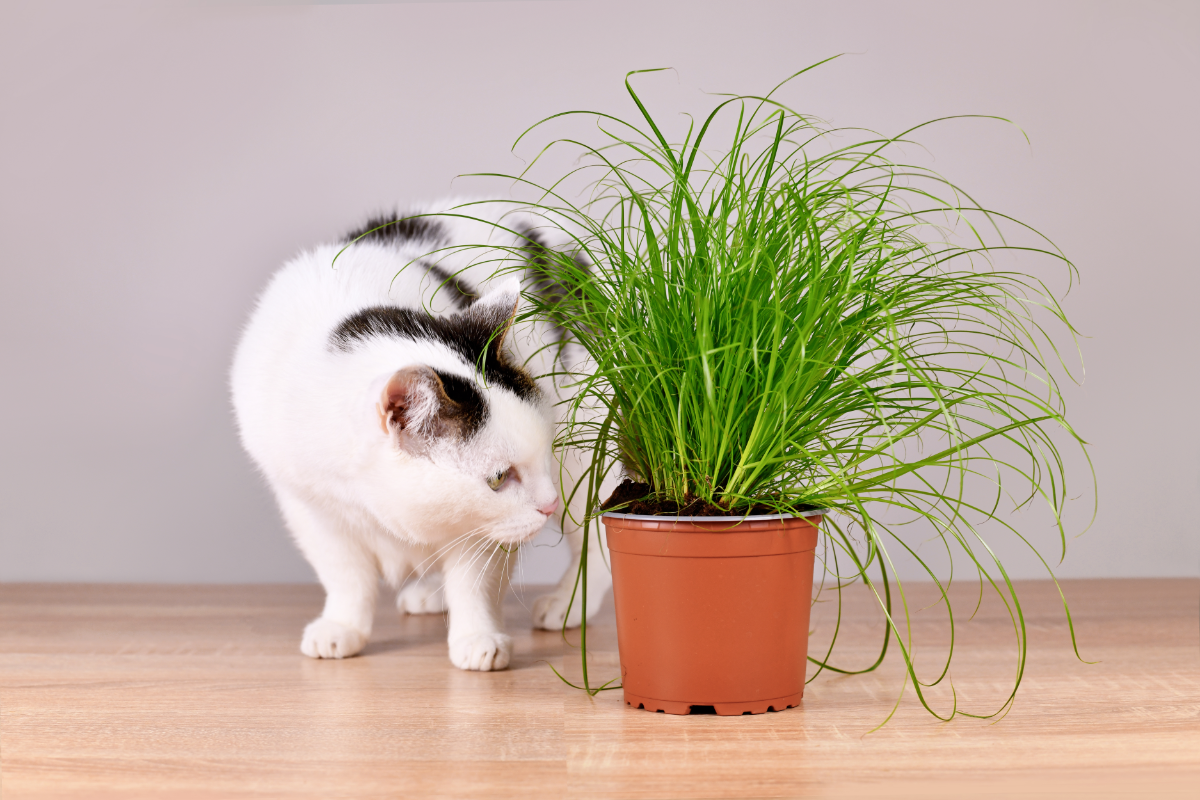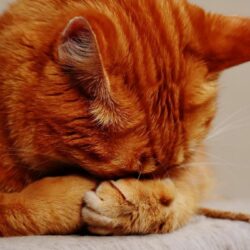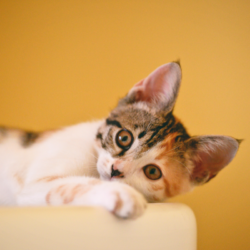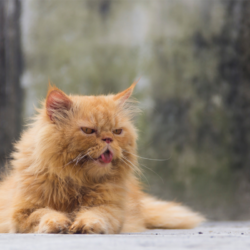Hairballs are a common problem in cats, especially those with long hair or who lick themselves excessively. Although natural, they can lead to serious complications if left untreated. This article will help you understand the causes of hairballs, their symptoms, diagnostic methods, available treatments, as well as natural solutions and ways to prevent them from forming.
What is a hairball?
Hairballs form when cats swallow a large quantity of hair during their daily grooming. Your cat’s raspy tongue catches the dead hairs, which it then swallows and passes through its digestive tract. Most of this hair is eliminated via the faeces, but some accumulates in the stomach, forming compact clumps known as trichobezoars.
The formation of these balls is more frequent during the seasonal moulting period (spring and autumn) or in long-haired cats, such as Persians or Sacred Birmans. Other factors can also contribute to their appearance, such as excessive licking linked to stress, itching caused by parasites or a diet low in fibre. In indoor cats, which are less active and more sedentary, intestinal transit is slower, encouraging hair to accumulate in the stomach.
So it’s important to monitor your cat’s behaviour and take good care of its coat, especially during moulting, to reduce the risk of hairballs forming.
What are the symptoms of hairballs?
Hairballs cause a variety of symptoms in cats, some of them benign but potentially serious if they obstruct the digestive tract. The first sign is often regurgitation of these clumps of hair. If the cat is unable to vomit them up, they stagnate in the stomach or intestines, causing intestinal transit problems.
Common symptoms include
- Frequent vomiting of hairballs or liquid ;
- Constipation, with hard or less frequent stools;
- Loss of appetite, sometimes accompanied by lethargy.
If a hairball completely blocks the intestines, it can cause an intestinal obstruction, a veterinary emergency. Signs of an obstruction include frequent vomiting, a distended and painful abdomen, and a complete absence of stools. Left untreated, this can rapidly lead to dehydration and a deterioration in the cat’s general condition.
It is essential to consult a vet if your cat displays any of these symptoms, particularly if it vomits frequently or seems uncomfortable, to check for the presence of a trichobezoar.
How is it diagnosed?
Diagnosis of hairballs is based mainly on observation of the symptoms and clinical examination. If the vet suspects the presence of a trichobezoar blocking the digestive tract, several techniques will be used to confirm the diagnosis.
X-rays are one of the most common methods of closely examining a cat’s abdominal organs. It is used to identify the presence of a cluster of hairs in the digestive system. In some cases, a contrast medium is administered to help visualise the affected areas and rule out the possibility of an intestinal obstruction.
In addition, a blood test may be carried out. This test can detect an increase in lactate levels, a sign of a digestive disorder, and confirm the presence of hairballs. These tests help the vet to determine the seriousness of the situation and choose the most appropriate treatment.
What treatments are available?
Treatment for hairballs depends on the seriousness of the situation and the symptoms observed. In mild cases, simple measures are often enough to solve the problem.
To help eliminate the hair, laxatives or oral lubricants (such as paraffin oil) can be administered. These products help to stimulate intestinal transit and moisturise the stools, enabling hairballs to be eliminated naturally. These solutions are particularly effective when the hairball is small.
If the obstruction is more serious, more extensive surgery is required. Conservative treatment consists of using a pharyngeal tube to evacuate gas from the stomach. In the case of a large trichobezoar, surgery may be required to remove the hairball. This operation is often performed as an emergency when the cat can no longer expel the balls naturally and is showing signs of intestinal obstruction.
In all cases, if your cat presents severe or persistent symptoms, it is vital to consult a vet as soon as possible.
What are the natural alternatives?
As well as medical treatments, there are natural alternatives to help your cat get rid of hairballs. For example, giving your companion catnip can help regurgitate accumulated hair. This plant has a purgative effect that helps cats get rid of hair naturally.
There are also food supplements, such as Savorial®, which act as lubricants and help to remove hair. Supplements generally come in paste or tablet form, and are administered regularly to prevent the accumulation of hairballs in the digestive tract.
Finally, a high-fibre diet helps to improve your cat’s intestinal transit, which in turn helps to eliminate ingested hair more effectively. Consult your vet before changing your cat’s diet.
What are the means of prevention?
Preventing hairballs mainly involves a few simple, regular steps. First of all, it’s essential to brush your cat’s coat frequently, especially if it has long hair or during moulting periods. This will reduce the amount of hair your cat swallows while grooming.
Next, make sure your cat eats a suitable diet, rich in fibre, to facilitate intestinal transit. Some kibbles specially formulated to help eliminate hairballs are available on the market.
Another important point is to treat your cat against external parasites. Fleas or ticks cause itching, which makes the cat lick itself more, increasing the risk of hair ingestion.
Finally, make sure your cat gets enough physical activity to stimulate its transit and prevent hairballs accumulating in the digestive tract. Regular play sessions and interactive toys can make a big contribution to your cat’s overall health.





